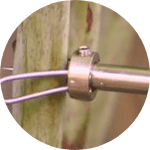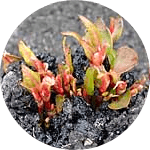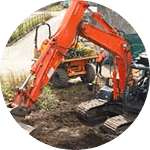Three Cornered Garlic Removal & Control

The overview
Common Name: Three cornered garlic
Latin name: Allium triquetrum
In Detail
- The plant is native to western and central Mediterranean and was originally introduced to the UK in 18th Century.
- Spread of the plant is mainly through seed. Once established the plant forms dense clumps of growth. The white bulbs can also reproduce by vegetative propagation and can be spread by movement of soils.
- All parts of the plant are edible and have a garlic smell.
Images supplied by Trevor Renals
Who we help
We have a long track record of managing some of the most complex sites in the country and have worked with the Environment Agency on several large flood alleviation projects, as well as providing advice to the majority of house builders and developers in the UK.
Click here to view who we help







Identification
- A perennial herb, with white bulbs. The leaves are green, hairless and narrow with 2-5 leaves per bulb. Leaves die back once the plant has flowered around May – June.
- Flower stems measure 10 – 45cm in height with white flowers, with a strong green stripe, similar in shape to bluebells. Stems have a triangular cross section giving rise to its common name.
- The plant prefers shadier areas but will grow in numerous habitats.
What’s the problem?
- Three cornered garlic is a non-native species which is becoming increasingly widespread.
- This species is a particular problem in the south and west of the country where conditions are generally warmer.
- The plant spreads by seeds which are transported by ants, these germinate readily forming dense clumps which can shade out and outcompete native species.
What Are the Legal Implications? *England
- Listed as a Schedule 9 species under the Wildlife and Countryside Act 1981, it is an offence to plant or allow to spread into the wild,
- Offences under the Wildlife and Countryside Act 1981 can result in possible fines and prison sentences,
- It is not an offence to have Three cornered garlic on your land and you do not need to notify anyone on its presence.
- Soils containing the plant are classified as controlled waste and should be disposed of at licensed landfill.
Control Methods
Mechanical Control
- Infestations can be removed mechanically by digging, this is easiest done in spring when surface vegetation is present, ensuring that all plant material and bulbs are removed. This may need to be followed by mechanical cutting over a number of years to exhaust the seed bank.
- Waste materials containing the Three cornered garlic are considered ‘controlled’ waste and must be disposed of appropriately.
Chemical Control
- Herbicide application can by successful at reducing the spread of the plant. Applications of herbicide should be made in spring before flowering.
- Multiple applications may be required due to the persistence of bulbs and of the soil seed bank
When treating large areas, a suitable grass and forb mix should be sown to prevent bare ground and colonisation of other unwanted species.
If you have concerns over Three cornered garlic species on your land, if you are unsure of your legal responsibilities, or, if you would like a quotation for control, please contact one of our specialist surveyors. Treatment costs start at £380.00 + VAT.

Where we have worked
We operate nationwide with a Rapid Response Team on standby 7 days a week, to deal with the most urgent client enquiries.
We’re a dedicated team of professionals who share a great deal of experience. We invest heavily in the continual training of all our employees, ensuring you always have a highly qualified team working on your project with the latest industry accreditations.
Our process

1. Identify
Our first step is to identify if you have an invasive plant. For a quick ID, you can send us some photos. Alternatively, we can carry out a full site survey to confirm the extent of the infestation.

2. Solution
We will provide a range of treatment options individually tailored depending on your site requirements.

3. Quote
A detailed breakdown of costs for each phase of treatment will be provided, including on-going monitoring programmes with insurance backed guarantees.

4. Removal
Our experienced and professional in-house teams will carry out the treatment to the highest of standards to achieve full eradication. All works are carried out in accordance with the INNSA Code of Practice.

5. Treatment
A range of treatment solutions are available, from in-situ herbicide application to excavation and removal or burial. All carried out in-house by our experienced team.

